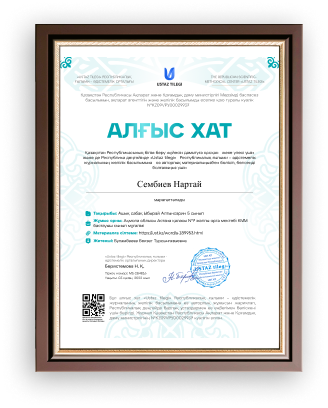|
Organization
Phase
|
Greet students, take attendance, and introduce the
lesson topic.
*“Good morning, everyone! Today, we are going to
learn about animals with backbones, also known as
vertebrates.”
Briefly introduce the five groups of
vertebrates:
*“Can anyone name some
animals with backbones? There are five main groups: birds, fish,
mammals, reptiles, and amphibians.
|
Students
listen and prepare their materials (textbook, notebook,
pencil).
Students
raise hands and share examples of vertebrates they know (e.g.,
birds: parrots, fish: goldfish,
etc.).
|
“Good
job!
Well done!
Very good ”
Formative
Assessment

Good
job!
Assessment
criteria
|
Student’s
book
|
|
Introduction
Phase
|
Display the textbook page with the vertebrate groups
on the board (if possible) and go over each section
quickly:
*“Let’s take a look at the groups one by one: birds,
fish, mammals, reptiles, and amphibians. We will read about them
and learn new words to describe them.
Read the passage about vertebrates from the textbook
(page 22).
*“Birds have got two
legs, two wings, and feathers. Most birds can fly, but some cannot.
For example, flamingos are birds. Now, let's look at
fish...
|
Students
follow along in their textbooks and listen to the
teacher.
Students
underline new vocabulary (wings, feathers, gills, scales,
etc.).
|
|
|
|
Main
part
|
Reading Activity
Ask the students to carefully look at the images and
read the text about different groups of vertebrates: birds, fish,
mammals, reptiles, and amphibians.
- *“Let's explore vertebrates! Who can tell me the
name of an animal from each group?
Vocabulary and Comprehension
Activity
Write key terms on the board like "feathers,"
"scales," "fur," "gills," and "smooth skin." Ask students to
identify which animal group each term belongs
to.
- *“Where do we find feathers? What about
scales?”*
Listening and Review
Activity
Exercise:3 page22
Play the audio for Track 1.22 and ask students to
fill in the blanks for each vertebrate group. They will listen to
statements about each type of animal (e.g., "It can live on land
and in water").
- *“Let’s listen again
and match each description to the correct vertebrate
group!
|
Students
read aloud or silently from the textbook. Each student can be
assigned a specific section (e.g., one reads about birds, another
about fish).
Students
answer by connecting each word to the corresponding vertebrate
group.
Students
listen and match descriptions like "They have feathers" to birds,
"They have fur" to mammals, etc.
Ex:3
1. They can
usually fly. Answer: Birds
2. Their
young are born from eggs.Answer: Birds, Fish, Reptiles,
Amphibians
3.Their
young form inside their bodies. Answer:
Mammals
4.They
haven’t gotlungs. Answer: Fish, Amphibians
(Tadpoles)
5. They
haven’t got arms or legs.Answer: Fish, Some Reptiles (e.g.,
snakes)
6.They’ve
got skin, fur, or feathers
Answer:
Mammals, Birds
7.They
don’t live on land.Answer: Fish
8.They can live in water and on land Answer:
Amphibians, Some Reptiles
|
|
interactive
board, video
|
|
End of
lesson
|
Home
task:
Vocabulary
Wings, Feathers, Scales, Fins, Fur,
Lungs
|
Students express
gratitude for something they learned or enjoyed during the lesson,
promoting a positive classroom
atmosphere.
|
Students
use their stickers to show their knowledge according to the
lesson.
|
|



















